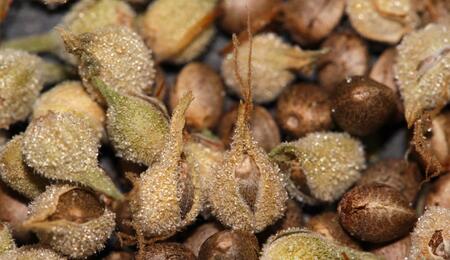Seeds & Clones

.
We’ve all heard of the huge greenhouses that today’s marijuana companies are employing to grow our favorite green. They have spent tens of millions of dollars designing and employing artificial environments that are suitable for the growth of cannabis and cannabis alone.
You might think that the big green companies are starting their plants with seeds. There are many tricks of the trade that will ensure that the plants grown from seed are female, as the unwanted male plant generates very little of the good stuff. I’ve looked in to the price of seeds, and they’re not cheap – some are as much as $30 a seed! Even with millions of dollars at your disposal that isn’t a cost that can be absorbed easily.
The only solution, then, is to use clones. Cloning a plant is a no brainer if you do it right. There are a couple of things that you should consider before cutting a clone, though. First, make sure you’ve got a female plant. Next, make sure you have a good rooting hormone and some rockwool.
Rockwool is a wonderfully inert blown glass product that is perfect for taking clones. It comes in bars that range in size from one to six inches square. I recommend the one inch square rockwool cube, as it is small enough to allow a healthy root ball to grow out of it while still being big enough to allow the rooting hormone and nutrient solution to infuse within it.
The rooting hormone you use with a clone cutting is very important. The idea is to take the cutting then immediately dip the end in the rooting hormone. The end then gets stuck into a cube of rockwool. You have to be quick at this because the raw end of the cutting can sometimes have a bubble of air form that encompasses the entire end. This bubble of air blocks the clone end from taking up nutrients. If no nutrients are getting to the cutting end it won’t form a healthy root ball.
In conversing with several marijuana greenhouses in Canada, I was surprised to learn that the plants aren’t grown by seeds – the production crop is initially grown with seeds, but clones are taken at the height of the green foliage stage. This takes 6 to 8 weeks and as many as 8 clones are taken from each parent plant.
Since each seed grown supplies up to 8 clones, the cost for each plant goes down considerably. Instead of $30 a plant the cost will, in the end, be only $3.75 per clone. This is a more manageable number. One greenhouse of the initial parent crop will fill eight greenhouses after 6 to 8 weeks of growth.
Most marijuana greenhouses I’ve spoken with keep an inventory of different seeds. Every strain has its own pros and cons. Some have a higher CBD concentration for medical ailments; others provide a recreational high of varying flavors and intensities.
You might think that cloning from parent plants that take 6 to 8 weeks to mature isn’t the way to go. The amount of time it takes to grow a healthy crop from cuttings of a parent plant takes a long time to be economically feasible – there’s no product for 12 to 16 weeks! When I first heard of this growing method I was a little surprised and somewhat skeptical.
While clones are useful and commonplace, most private growers will still purchase those $30 seeds for their own home grow operation. I doubt that many people will let their crop go to seed in order to have more seeds later on. The seed banks will always sell their overpriced wares to the public, and the public will always buy them.
The big cannabis companies not only supply us with medicinal and recreational marijuana, they still have to eventually let a parent crop go to seed to replenish what the last crop used up. The amount of seeds that are generated from a seeding crop varies per plant. Some plants grow seeds that then fall off the plant to be harvested later and some stay on the plant that then has to be picked.
In the months and years to come, you’ll no doubt see a rise in the different flavors and highs that come with genetically bred plants. Most greenhouses dedicate a large section of their growing space to breeding the next super plant. Everyone I spoke with has told me that they have a whole line of medicinal and recreational breeds that will be released to the general public once a large enough supply of the stuff has been grown.
Highs come in all flavors, from a soothing indica to an intense sativa. The marijuana companies cater to all customers in one way or another. Expect there to be an easing on the rules and regulations that allow you to grow your own crop. The Canadian provinces of Manitoba, Quebec and Nunavut don’t allow private growing, for example – you have to get your dope by purchasing it from legal sources.
The next time you go to a marijuana dispensary, think of the amount of effort that goes into producing a crop of nature’s finest weed. On a national scale, the competition is intense. While it isn’t legal to advertise marijuana, there’s no law that says the marijuana retailer may or may not inform its customers of the concentration of all that makes marijuana great, both medicinally and recreationally.



.png)